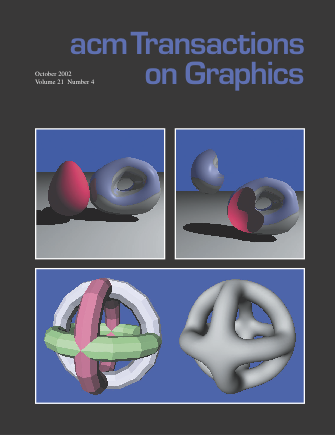Modelling with Implicit Surfaces that Interpolate
Abstract
We introduce new techniques for modelling with interpolating implicit surfaces. This form of implicit surface was first used for problems of surface reconstruction and shape transformation, but the emphasis of our work is on model creation. These implicit surfaces are described by specifying locations in 3D through which the surface should pass, and also identifying locations that are interior or exterior to the surface. A 3D implicit function is created from these constraints using a variational scattered data interpolation approach, and the iso-surface of this function describes a surface. Like other implicit surface descriptions, these surfaces can be used for CSG and interference detection, may be interactively manipulated, are readily approximated by polygonal tilings, and are easy to ray trace. A key strength for model creation is that interpolating implicit surfaces allow the direct specification of both the location of points on the surface and the surface normals. These are two important manipulation techniques that are difficult to achieve using other implicit surface representations such as sums of spherical or ellipsoidal Gaussian functions (“blobbies”). We show that these properties make this form of implicit surface particularly attractive for interactive sculpting using the particle sampling technique introduced by Witkin and Heckbert. Our formulation also yields a simple method for converting a polygonal model to a smooth implicit model, as well as a new way to form blends between objects.
Citation
Greg Turk and James F. O'Brien. "Modelling with Implicit Surfaces that Interpolate". ACM Transactions on Graphics, 21(4):855–873, October 2002.
Supplemental Material










